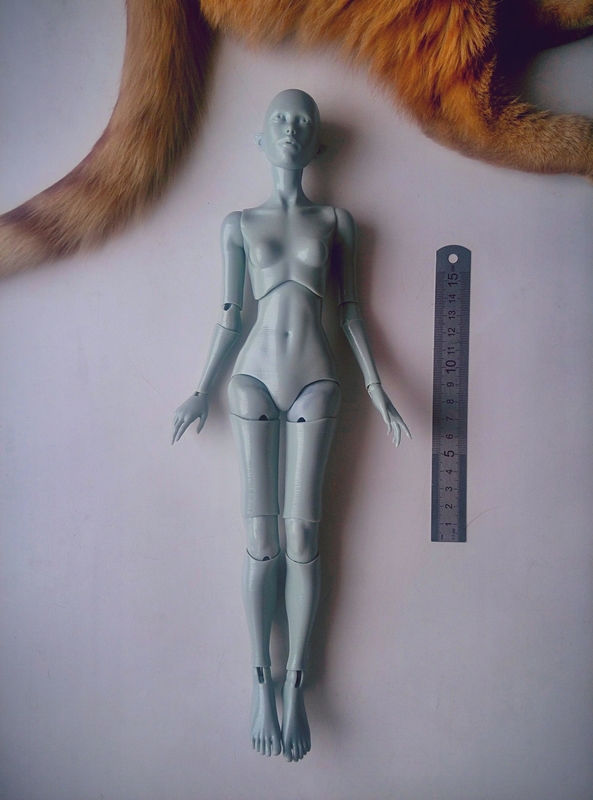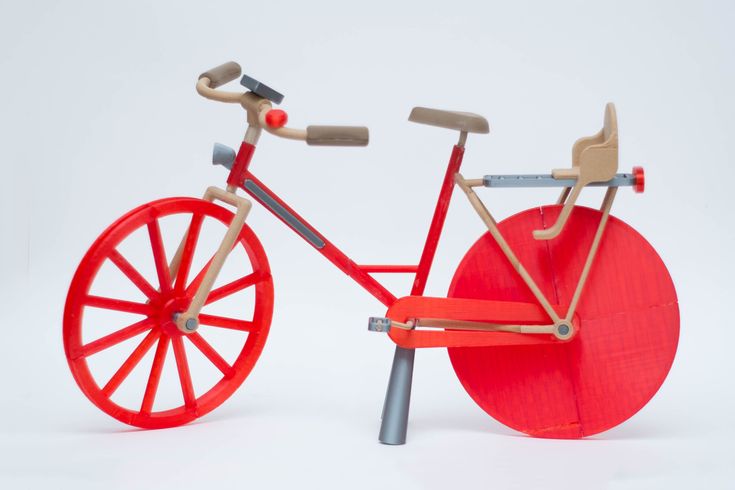What can 3d printers make
What can you make with a 3D printer?
Contact an HP 3D Print expert
Choose the phone number for your country to speak to a local HP 3D Printing sales expert today.
België/Belgique
+32 78 48 44 69
Czech Republic
+420 239 050 531
Deutschland
+49 7031 986 90 13
+49 7031 986 90 17
España
+34 93 003 45 95
France
+33 6 28 78 35 59
Italia
+39 02 8295 2406
Nederland
+31 20 241 5685
Norway
+47 23 96 00 13
Österreich
+43 720 117035
+43 1424 0091
Romania
+40 376 300 174
Sweden
+46 8 446 891 49
Suisse/Switzerland
+41 44 511 2308
+41 44 511 2333
United Kingdom
+44 20 7365 8158
United States
+1 877 468 8369
Data courtesy1
What can you make with a 3D printer and additive manufacturing technologies?
In one way or another, 3D printing is being used in almost all industries. So, when you’re wondering what can be made with additive manufacturing, the short answer is almost anything.
Applications of additive manufacturing
Many industries are harnessing the power and flexibility of 3D printing. Here are some of the most common products that are currently made with 3D printing:
- Consumer products (eyewear, footwear, design, furniture)
- Industrial products (manufacturing aids and tools, prototypes, functional end-use parts)
- Automotive and aerospace prototypes and final parts
- Medical, healthcare, and dental products
- Prosthetics and orthotics
- Architectural scale models and maquettes
- Reconstructing fossils and ancient artifacts
- Reconstructed evidence for forensic pathology
- Movie props
This list is not exhaustive, and 3D printing is used for a huge variety of purposes. And it’s not just final manufacture, it can help improve almost every phase of the manufacturing process, starting right from the beginning.
Transforming design with rapid prototyping
Aside from the ability to transform the production of final parts, one of the most useful and common applications of 3D printing and additive manufacturing is for rapid prototyping. Using 3D printing to develop new products is helping manufacturers around the world reduce time to market and increases opportunities for efficiency and innovation.
Back to menu
Why use 3D printers for rapid prototyping?
Basically, because it’s cost effective and fast, in fact, with 3D printing, it can be possible to go from an initial idea to a working prototype in a matter of days. This could cut weeks out of product development time. Depending on the application, you could even make a fully functional prototype in the final material, allowing you to better evaluate and test your designs.
If you need to make changes, you’ll find that iterations are faster and cheaper to make, allowing you and your team to work quickly to improve all aspects of your products.
And you need not stop at prototyping: 3D printing can also be used for short-run production, one-off custom products, or full-scale final part production – and also spare parts. It’s a complete end-to-end technology, so it can transform every aspect of your business.
Sectors that use 3D printing and applications of additive manufacturing
3D printing and additive manufacturing are exceptionally flexible and can be used in almost all industries. Here are a few of the most common industries and examples of how 3D printing and additive manufacturing are being used.
Industrial applications of the additive manufacturing process
3D printing is fast becoming a key technology for efficient design and production in the industrial sector. Examples of industrial 3D printing applications where additive manufacturing can enhance performance and cut lead times and costs include manufacture of machinery and industrial equipment, production line components, robots, and end-of-arm-tooling (EOAT), molds, manufacturing aids, tooling, jigs, and fixtures.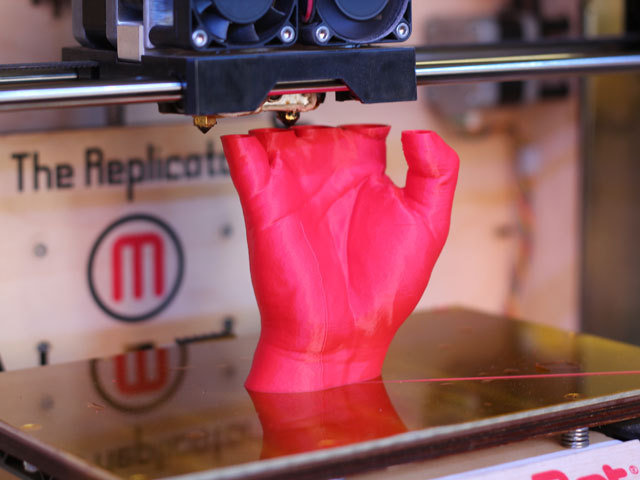
Back to menu
Data courtesy2
3D printing in the automotive industry
Car makers around the world are using 3D printing to design and build prototype and final car parts – as well as spare parts, tools, jigs, and manufacturing aids. Overall, additive manufacturing has shortened the design and production process and has allowed for on-demand manufacturing, which reduces the need for inventory, warehousing, and storage.
But it isn’t just brand-new vehicles that benefit. Automotive enthusiasts are using 3D printed car parts to restore classic cars.
Automotive 3D printing case study
HP 3D printing helps CUPRA Racing create lightweight components for a new race car
Barcelona based SEAT is the only company that still designs, develops, and manufactures cars entirely in Spain. CUPRA is a stand-alone company within the SEAT organization that produces high-performance vehicles, including race cars.
During the conceptualization stages of their new racing car the CUPRA Leon Competición, CUPRA was faced with the challenge of quickly creating prototypes for some of the car’s lightweight components, including side mirrors, air vents, and a central control module for the steering wheel.
CUPRA turned to 3D printing - specifically the HP Jet Fusion 5200 Series 3D Printing Solution. Together, they were able to rapidly iterate designs, test those designs, and progress to the final product in a reduced time frame.
HP Metal Jet reduces car part production time at Volkswagen
Volkswagen, one of the world’s largest and most innovative vehicle makers, has adopted HP Metal Jet technology to produce high-performance functional car parts with specific structural requirements, such as gearshift knobs and mirror mounts.
Data courtesy3
“Our vision to industrialize additive manufacturing is quickly becoming a reality with HP Metal Jet. It is a game changer for the automotive industry,” says Dr. Martin Göede, Head of Technology Planning and Development for Volkswagen.
It is a game changer for the automotive industry,” says Dr. Martin Göede, Head of Technology Planning and Development for Volkswagen.
Back to menu
3D printing in the aviation and aerospace industry
Aviation and aerospace companies were early adopters of printing and additive manufacturing. As you might expect, some of the most rigid performance standards apply to this industry, and that creates the need for parts that are reliable in demanding conditions. Engineers who are designing and manufacturing for commercial and military aviation and aerospace need components made from the highest performance materials, and 3D printing is being used at all stages of design and production.
Back to menu
3D printing in the construction, architecture, and interior design industries
While 3D printed houses are already commercially available, most construction companies use the technology to produce pre-fabricated parts, often onsite.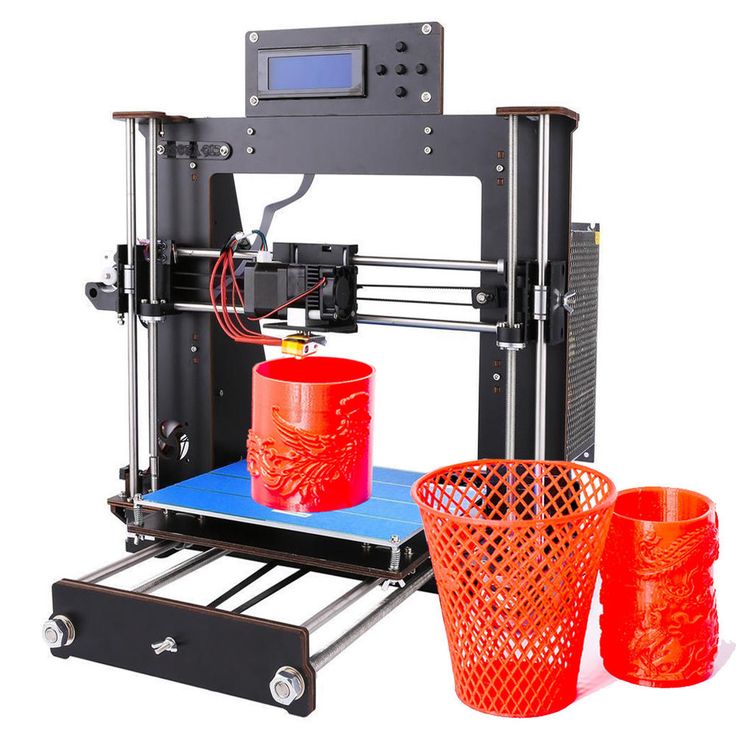
These are usually large-scale concrete printing systems with wide nozzles that allow for large flow rate. This can be used to lay down concrete layers quickly, but also repeatably. However, 3D printing can also be used for more delicate and refined parts and intricate models as well.
Prior to construction, 3D printing can be beneficial to architects during the design phase. Take, for example, the Korean 3D printing service HS HI-TECH which used HP Multi Jet Fusion 3D printing technology to create uniquely designed architectural elements and build modular structures.
3D printing can also bring great benefits in terms of innovation and design freedom for interior design, home decoration, and furniture – such as custom-designed furniture and lighting.
Back to menu
3D printing for the medical and healthcare industry
The medical and dental industry is one of the fastest-growing adopters of additive manufacturing. From medical devices to prosthetics and even bioprinting, the applications of additive manufacturing for the medical industry are wide-ranging and often revolutionary.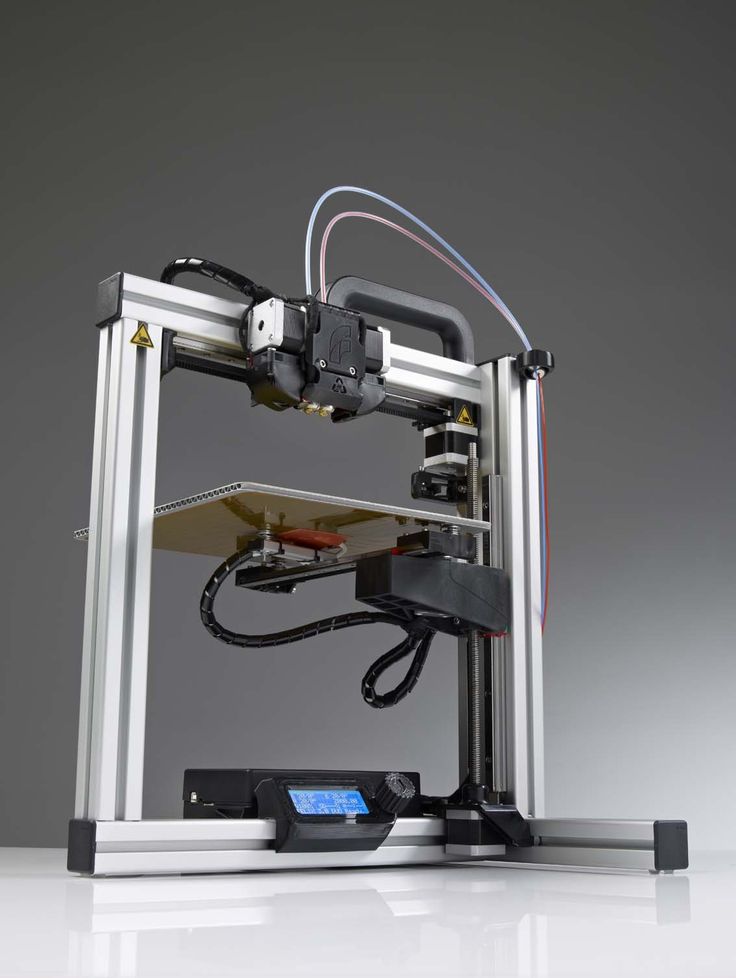
The benefits of 3D printing for medical and dental
The freedom afforded by 3D printing and the ability to provide personalized solutions for patients in an efficient manner is driving huge growth in the medical and dental sectors. When coupled with detailed scanning, 3D printing can be used to provide highly customized patient-specific solutions like orthotics, prosthetics, or dental appliances.
Thanks to rapid prototyping, medical device manufacturers have freedom to design new products and help bring new medical devices to the market faster than ever.
Medical 3D printing case studies
Everex manufactures medical devices faster and at a lower cost
Everex is an Italian engineering company that creates unique and technologically advanced products that specialize in instruments for in-vitro diagnostic (IVD) analysis, the concept, and design of which are proposed by the customer.
Everex has recognized 3D printing as a crucial technology for new products, specifically in the field of diagnostic instruments.
One of Everex’s devices is called Hemo One, which is used to analyze samples of blood through clinical chemistry. All parts that comprise Hemo One were previously produced using traditional methods, but now are made with 3D printing or additive manufacturing.
Data courtesy4
Biotec Italia s.r.l. produces electromedical parts faster with HP 3D Printing
Biotec Italia s.r.l. produces machinery for electromedical and aesthetic applications. Biotec wanted to manufacture parts for its CoaxMed machine, a revolutionary combination of monopolar, bipolar, fractional radiofrequency (RF), low-frequency ultrasound, vacuum massage, and cryliposculting technologies, and turned to HP Multi Jet Fusion (MJF) technology to help accelerate production.
3D printing for orthotics and prosthetics
With its core focus on enhancing patient comfort, the medical industry is leveraging the capabilities of 3D printing to create patient-specific devices, like prosthetics and orthotics. The benefits of design freedom and rapid production of customized devices make 3D printing an appealing alternative versus traditional manufacturing methods.
The benefits of design freedom and rapid production of customized devices make 3D printing an appealing alternative versus traditional manufacturing methods.
Data courtesy5
Additive manufacturing for bioprinting
One of the most revolutionary applications of 3D printing is its potential use in the nascent field of bioprinting. Around the world, biotech firms, researchers, and academics are exploring the possible use for 3D printing in tissue engineering applications to create cells and organs, including inkjet bioprinting techniques, where layers of bio-ink, that is mostly comprised of cells, are deposited onto a hydrogel substrate, and are then slowly built up to form fully 3D structures.
Back to menu
The role of 3D printing technology during the COVID-19 pandemic
In spring 2020, hospitals were confronted with a new challenge when the COVID-19 virus began to take hold around the world. It wasn’t long before the global supply of personal protective equipment (PPE) and medical devices were dwindling, and the medical community turned to technology to solve the shortage. Throughout the pandemic, 3D printing was used to supply healthcare staff with much-needed PPE, as well as spare parts to fix overworked ventilators.
It wasn’t long before the global supply of personal protective equipment (PPE) and medical devices were dwindling, and the medical community turned to technology to solve the shortage. Throughout the pandemic, 3D printing was used to supply healthcare staff with much-needed PPE, as well as spare parts to fix overworked ventilators.
Global corporations, start-ups, and even high-school students with 3D printers answered the call. Thanks to 3D printing, millions of items of PPE and ventilator parts have now been shipped to hospitals around the world.
HP 3D Printing helped enable the design and manufacture of millions of critical medical parts to help mitigate the medical supplies shortage.
3D printing in the dental industry
The dental industry may contain the single most 3D printed object in the world: the mold for clear aligners. These molds can be 3D printed with powder- and resin-based 3D printing processes, and with material jetting. But this is not the only dental product to be 3D printed: in fact, crowns, dentures, and surgical guides can all be made too.
But this is not the only dental product to be 3D printed: in fact, crowns, dentures, and surgical guides can all be made too.
Dental 3D printing case study
SmileDirectClub scales dental aligner 3D print production to deliver straighter smiles to millions
SmileDirectClub is the first direct-to-consumer med-tech platform for teeth straightening and transforming smiles. SmileDirectClub had a dental aligner production method in place since its inception in 2014, but due to its growing customer base, the company needed a manufacturing technology that would allow them to meet the increasing demand for at-home clear aligner therapy. Their previous technology produced delicate, fragile parts at slow speeds and high costs.
Data courtesy6
“The volume output over a 24-hour time frame was low and we needed to find a way to increase volume output,” said John Dargis, Vice President of Manufacturing for SmileDirectClub.
This led Dargis and his team to research technologies that would enable them to mass-produce molds to create dental aligners, and thus deliver orthodontic solutions to customers more quickly. Today, they use HP 3D Printing, and the impact has been transformative.
Back to menu
3D Printing in the consumer goods industry
3D printing in the footwear sector
Before shoes were made in a range of uniform sizes, they were all custom made to fit individual feet. However, the requirement to produce in large quantities made custom production prohibitively expensive.
With 3D printing, custom-made footwear can be produced, even at scale.
“One hundred years from now, we might look back and see that the moment of industrialization where we had to fit into pre-existing sizes and styles was a blip in the history of shoemaking,” says Elizabeth Semmelhack, senior curator at the BATA Shoe Museum in Toronto.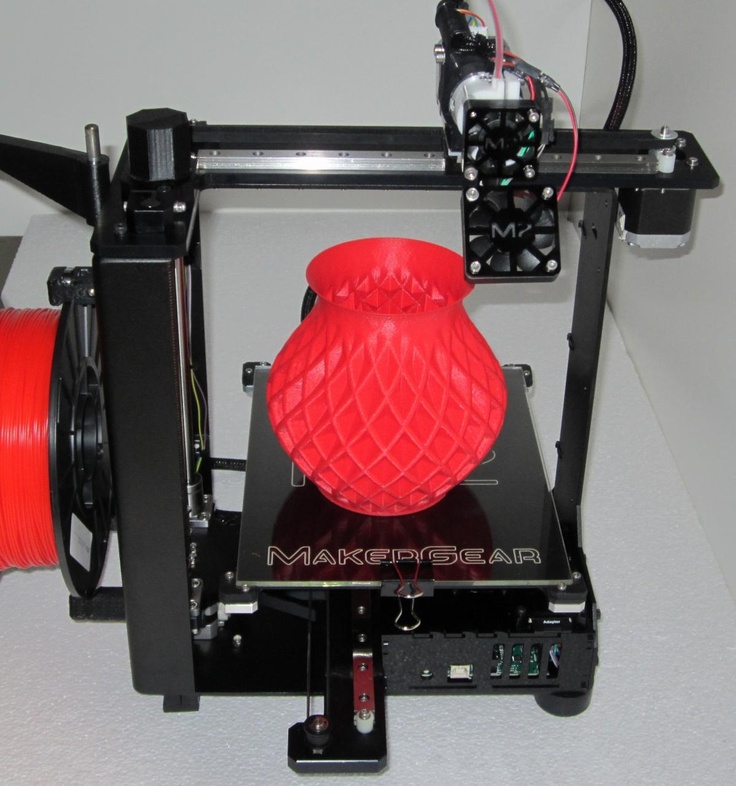 “Today, we’re moving back to bespoke footwear.”
“Today, we’re moving back to bespoke footwear.”
Data courtesy7
This revolution is led by new technologies that scan your foot and create a digital 3D model of your foot. That model is sent to a 3D printer, which creates a unique insole that you can wear inside any shoe, allowing everyone to experience a new era of truly personalized shoe shopping.
3D printing in ophthalmology and eyewear
3D printing is a particularly suitable production method for eyewear frames because the measurements of an individual are easy to process in the end product.
Eyewear 3D printing case study
HORIZONS OPTICAL manufactures parts for custom eyewear with HP Multi Jet Fusion.
HORIZONS OPTICAL develops technologies and services to ophthalmic laboratories, optical chains with production capacity, and other industries in the optical sector. HORIZONS OPTICAL’s “Made4U” concept allows customers to personalize their eyewear based on their unique physical characteristics, visual needs, and personal taste.
Data courtesy8
With HP Multi Jet Fusion technology, HORIZONS OPTICAL created an end-to-end solution for customized eyewear. This includes using specialized software to take a 3D scan of the face, collect biometric data, allow customers to virtually try on glasses, and choose from a range of color options for the frames. Once the customization and fitting processes are completed, the glasses are sent to be 3D printed.
Back to menu
3D printing in the jewelry and wearables industry
3D printing can produce jewelry with direct or indirect production processes. Direct includes the creation of an item straight from a 3D design, while indirect manufacturing is 3D printing a mold that will be used to later create an item of jewelry. Working in either of these ways is helping to revolutionize the jewelry industry around the world.
3D printing in the sports equipment sector
Unlike other clothing and fashion sectors, the sports equipment industry places its primary focus on performance.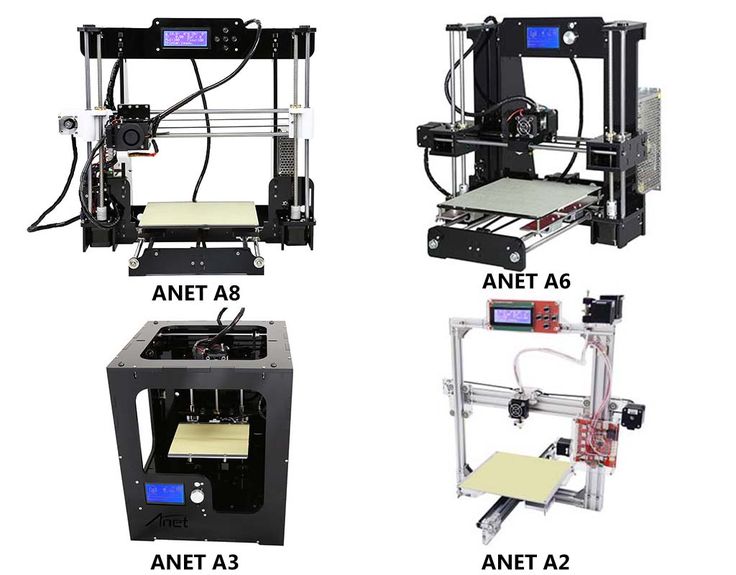 This means that offering a customized fit can enhance the performance of an athlete and give them a competitive edge over their opponents. 3D printing is helping to provide custom-made equipment and footwear to sports professionals and athletes around the world.
This means that offering a customized fit can enhance the performance of an athlete and give them a competitive edge over their opponents. 3D printing is helping to provide custom-made equipment and footwear to sports professionals and athletes around the world.
Sports equipment 3D printing case study
Cobra Golf and Parmatech 3D print custom made golf putters
Cobra Golf and Parmatech used HP Metal Jet to launch Cobra Golf’s 3D printed golf putter: the KING Supersport-35. This limited edition, fully 3D printed putter with SIK face technology delivers the next level in personalization and putter performance.
Data courtesy9
Other 3D printing applications for the sports industry can range from protective sports equipment, including helmets and padding, or even innovative table tennis accessories.
Back to menu
3D printing in the education sector
3D printers have a variety of applications in the classroom and can enable teachers and students to create new models and prototypes quickly and cheaply.
There are still only a few degree courses that entirely specialize in additive manufacturing, but they are growing all the time, and many engineering, design, or product development departments will now have access to an onsite 3D printer. This is in addition to courses that allow students to specialize in CAD and 3D design, all of which can encompass experience with 3D printing.
No matter what the subject is, if the production of rapid models or prototypes is required, 3D printing is the optimum solution. Whether architectural, industrial, or even artistic models are required, 3D printing offers the fastest way to work, the best results, and a chance to future-proof the education of students around the world.
Back to menu
Want to continue learning?
Footnotes and disclaimers
- Data courtesy of Cupra
- Data courtesy of Fast Radius
- Data courtesy of Volkswagen
- Data courtesy of Everex Srl.

- Data courtesy of Twikit. Printed by ZiggZagg (HP DMN partner)
- Data courtesy of SmileDirectClub
- Data courtesy of Superfeet
- Data courtesy of Horizons Optical SLU
- Data courtesy of Cobra Golf
25 (Unexpected) 3D Printing Use Cases
For years, hype around 3D printing captured audiences in the mainstream press. With visions of a future including a 3D printer in every home, these predictions were light on details and ultimately most did not come to fruition. However, the possibilities of 3D printing were undeniable, despite the youth of the technology and the relatively low number of use cases that were viable in the past.
The initial hype masked legitimate and growing business applications for 3D printing. With a proliferation of high-performance desktop and benchtop machines being introduced into the market, we are now seeing a broader variety of businesses expanding their product offerings and delivering better results to customers.
What can you do with a 3D printer? Read on to discover 25 (often unexpected) 3D printing use cases that show the broad scope of possible applications for the technology.
Report
A new industry report that compares how recent and early adopters are using 3D printing for their business, and explores future trends of the technology.
3D printing can add enormous value to supply chains, unlocking a broad spectrum of production applications. The technology is growing more workable and affordable, with companies able to bring additive manufacturing in-house to support processes on the factory floor. New, resilient 3D printing materials are opening opportunities for the production of high precision, functional 3D prints that can stand in for final parts, offering customization opportunities that help designers radically push the boundaries of high-performance cars. Industrial design studio Vital Auto has put all of this technology to work creating high-fidelity prototypes and concept cars, rapidly working through iterations using a variety of advanced tools, including a large fleet of in-house 3D printers.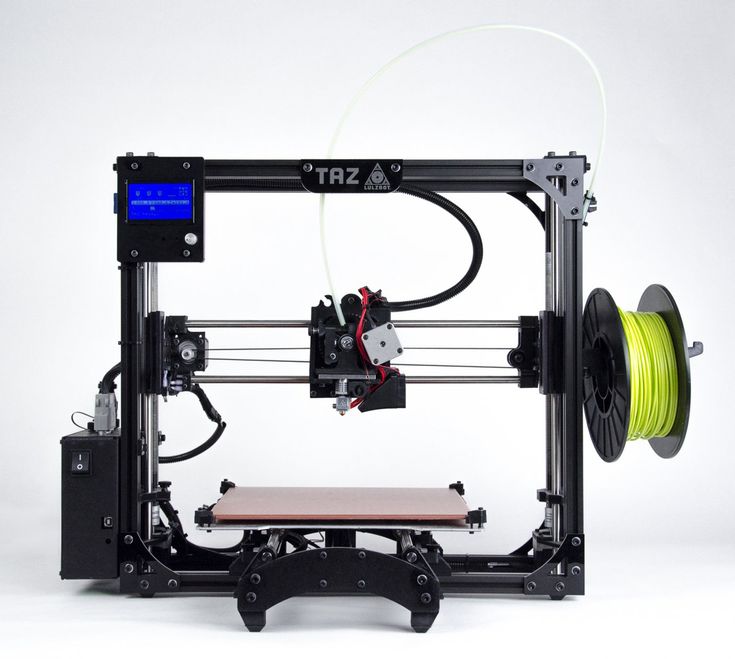
“We've used 3D printing from day one. We wanted to introduce it to our manufacturing processes, not only to reduce costs, but to give the customer more diversity with their designs and their ideas,” said Design Engineer Anthony Barnicott.
The automotive industry has seen the value additive manufacturing can add to multiple touch points in the creation of automobiles. This means going well beyond rapid prototyping to include:
- Creating custom, complex, and high-performance parts
- Producing tooling and manufacturing aids
- Manufacturing replacement parts and spare parts on demand
- Cutting costs and lead times by up to 90% compared to outsourcing
See How Concept Cars Are Created
Recent advancements in 3D printing technology have started to fundamentally change the audio industry, meaning that digital printing of custom fit ear devices for the audiology, noise protection, and consumer audiology industries has never been so affordable. In recent years, 3D printing manufacturers have brought skin-safe biocompatible materials to market, allowing for in-house production of ear models and headphone tips.
In recent years, 3D printing manufacturers have brought skin-safe biocompatible materials to market, allowing for in-house production of ear models and headphone tips.
Custom fit offers a unique individual listening experience built around the earphone fitting exactly in the customers ear. This gives a secure fit that removes any possibility of earphones falling out of the ear, in addition to improved comfort and noise isolation.
“We are very excited about the concept of custom fit to deliver a custom experience to further enhance immersive listening. Formlabs shares Sennheiser’s drive for innovation – and improving the customer experience through this prototype is a testament to that mindset.”
Sennheiser Director AMBEO Immersive Audio, Veronique Larcher
The challenges that come with customized manufacturing can be overcome through the combination of Formlabs' disruptive printing technology and mobile scanning coupled with machine learning. This means customers can have easy access to custom fit earphones, with lead times reduced from four days to next day delivery or even same day.
This means customers can have easy access to custom fit earphones, with lead times reduced from four days to next day delivery or even same day.
Learn More About 3D Printing in Audiology
restor3D tools being printed, along side their final form.
Ten years ago, few people were talking about the huge impact 3D printing would have on the medical industry, from helping create advanced medical devices to patient-specific surgical guides. One company no one saw coming was restor3d, who leverages 3D printing capabilities to drastically improve surgical care by printing procedure-specific polymer instrumentation tailored to cervical spine implants.
With a fleet of over 25 Formlabs 3D printers in its production line, restor3D is already printing the next generation of surgical tools. For surgeons using these tools, this procedure-specific, single packed sterile instrumentation system results in:
- Replacement of large, expensive surgical trays.
- Ability to iterate designs and quickly introduce new tools or features based on surgeon preferences.

- Dramatic reduction of supply chain and sterilization costs for hospitals.
Read How restor3d Is Creating Next Generation Tools
As much as 3D printing technology has developed in the past few years, there are even more high-impact, use cases currently in development. 3D printed organs is one of them.
Being able to easily create new organs has for decades been a dream for scientists working in regenerative medicine. While it remains in its early stages, the use of the 3D workflow to produce organic tissue eligible for transplant is bearing early fruit.
Dr. Sam Pashneh-Tala from the University of Sheffield is leading the way. His research uses high-precision desktop stereolithography (SLA) 3D printing to enable the production of tissue-engineered blood vessels with a variety of geometries. This will allow for patient-specific vascular graft designs, improved surgical options, and provides a unique testing platform for new vascular medical devices for those suffering from cardiovascular disease—which is currently the number one cause of death worldwide.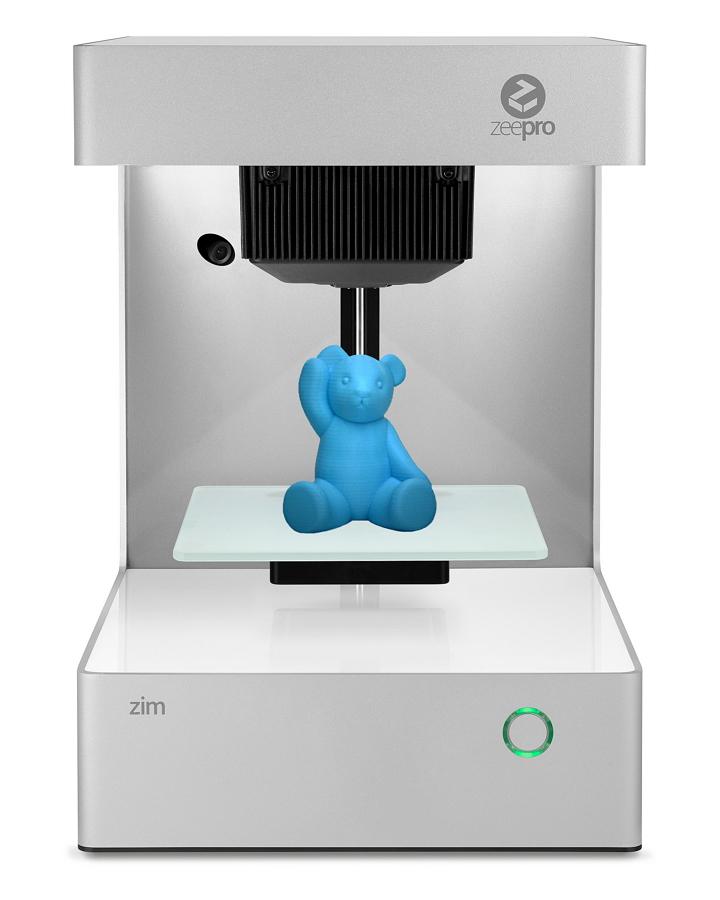
“My differentiator is that I’m able to create blood vessels with geometries that are more closely matched to those found in the body. This offers the potential for improved surgical options and even patient-matched blood vessel designs. Without access to high-precision, affordable 3D printing, creating these shapes would not be possible, ” said Dr. Pashneh-Tal.
Read About Tissue Engineering
The reconstruction of the three cities in the two different time periods consisted of over 650 segments, which were printed using Formlabs White Resin, each measuring 12x12cm.
As an industry already based on geometric design, prototyping, and modeling, architecture stands to gain enormously from advances in 3D printing technology.
On top of saving time during model production, the 3D printed models allow architects to anticipate the effects of certain design features with much greater certainty, e.g., by seeing a model produced with a fuller complement of materials, an architect can measure aspects such a light flow through the structure with higher precision.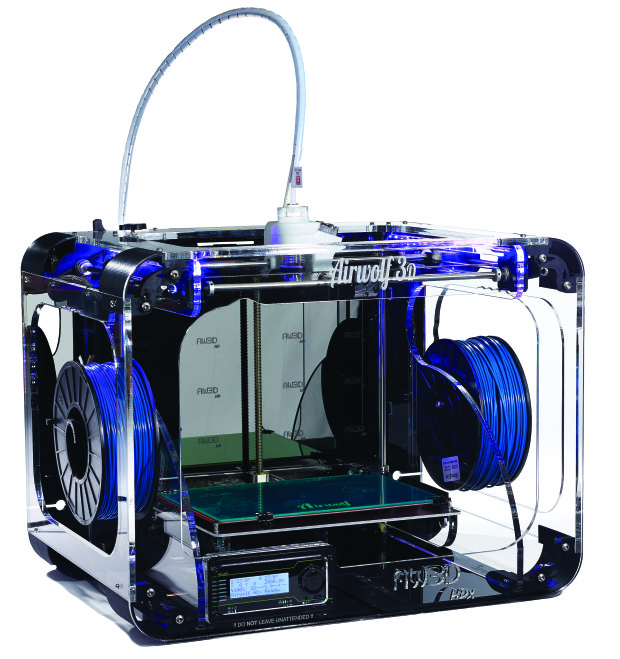
But 3D printing’s use case goes beyond a single model: some firms are recreating entire towns. Institute of Architecture at the Hochschule Mainz - University of Applied Sciences. The result is an extraordinary exhibition that showcases six large-scale models of the cities, in the years 800 and 1250 AD. The models consist of over 650 parts, all of which were created using SLA 3D printing technology.
Learn About the Reconstruction of Medieval German Cities
The 990S TripleCell and the FuelCell Echo Triple.
The sport-footwear industry has long relied on technology to optimize the performance of their products, and with the digital workflow they have more options than ever in customization.
Large brands like New Balance, Adidas, and Nike, having recognized the power of additive manufacture, intend to mass produce custom midsoles made from 3D printed materials. As in other industries, the digital workflow will augment traditional methods of manufacture here—critical, highly-customized components of each product will be entrusted to the 3D printing, and the rest left to traditional means.
Given the unique properties required for footwear, New Balance worked with Formlabs to create a custom printing material which could resist the daily wear and tear faced by an athletic shoe. Shoe materials experience a variety of environments, with the additional need to withstand various levels of pressure thousands of times per day. Designed to create springy, resilient lattice structures, Rebound Resin has a much higher energy return, tear strength, and elongation than any other Formlabs material. Rebound Resin is strong enough to be used in gaskets, seals, and automotive interiors, but light and flexible enough for the sole of a shoe.
“One of the things that’s really exciting for us is that it provides a very different experience for the runner.”
Katherine Petrecca, General Manager of Footwear at the Innovation Design Studio, New Balance
See the 3D Printed New Balance Shoe
3D printing has already been integrated into the production of Hollywood films and is widely used for practical visual effects and costuming.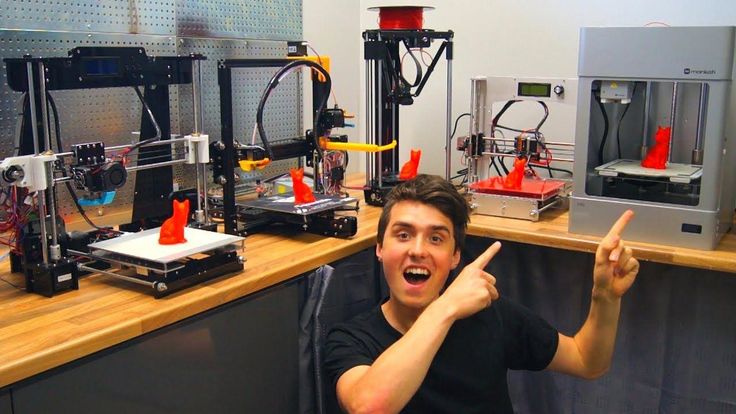
Whereas the creation of film's most fantastic creatures once required meticulous handcraft, the increased deadline pressure and time demands of modern moviemaking have made a quicker method of creating practical effects vital. Effects studios like Aaron Sims Creative now use a hybridized approach, practical effect-making enhanced by the digital workflow, to create new opportunities for collaboration and cut lead times on bringing ideas to life.
“The Demogorgon was one of the first prints that we did using our Formlabs 3D printers, and we were amazed. Before that, we had always outsourced printing. So to be able to grow it in-house, and see a design that we helped create from the very beginning printed right in front of us, was kind of an amazing thing. It was like going back to the days when we used to sculpt with clay,” said Aaron Sims.
Read About How Aaron Sims Creative Builds Their Worlds
3D printing's artistic potential is not limited to physical artwork. It also has the power to bring entirely new dimensions to forms like dance and music. Given the design freedom inherent in 3D printing, even the most complex or unique instruments can be modified or created from scratch, at a fraction of the price of traditionally made instruments.
Given the design freedom inherent in 3D printing, even the most complex or unique instruments can be modified or created from scratch, at a fraction of the price of traditionally made instruments.
Having been around for centuries and barely changing, the violin’s form is recognizable to all. Violin music has evolved to such a high level that the instrument has attained an almost legendary status in our culture. But Formlabs engineer Brian Chan challenged himself to create a fully-functional acoustic violin, using a 3D printer and Formlabs White Resin.
Get an Inside Look at Design Process
3D scanning, CAD, and 3D printing have been used to restore the works of some of history's most famous artists, returning works by the likes of Michelangelo and da Vinci to their former glory.
Art restoration projects can be enhanced by combining 3D printing and 3D scanning, two powerful technologies that allow builders to take physical objects, turn them into three dimensional shapes, make changes or restorations, and re-print the parts.
Mattia Mercante uses 3D replication to replace lost pieces of sculptures and fine artworks at the world-renowned Opificio institute in Florence, allowing museum visitors to experience the art as the artists intended.
For one 17th-century reliquary, Mercante scanned intricate frame details from elsewhere on the piece using an HP 3D Structured Light Scanner, and then replicated the missing pieces on a Formlabs 3D printer. The prints were painted to appear identical to the original decorations. Best of all, the restoration required minimum CAD modeling, and was fast and affordable compared to hand craft.
Learn More About Art Restoration
3D printing has as much potential utility in reconstruction as it does in production. The work of a forensic artist is often made difficult by incomplete evidence. Digital technologies can be of tremendous use in legal investigations and can augment the abilities of forensic artists to reconstruct accurate models of persons of interest or victims.
The digital workflow here involves turning CT scans into 3D prints to aid in identification. For instance, when investigators find just part of a skull as evidence, a printer can model and replicate the complete sample.
Reconstructions of the appearance of crime victims have already played a key role in attaining justice, proving once again the utility of 3D printing beyond considerations of design and productive efficiency.
Just like 3D printing can be used for preoperative planning, CT scans of crime victims can help detectives get up-close to bones. Digital CT scan and X-ray data of remains can be used to produce 3D-printed replicas of various body parts. Then, the pathologist can determine the full circumstances of a crime, from the number of participants to the nature of the weapon used.
Learn More About Solving Crime
3D printing's impact is not limited to improving workflows or enabling rapid prototyping. It can also change lives directly. With 30 million people worldwide in need of artificial limbs and braces, there is hope that 3D printing can provide new solutions where cost and specification have traditionally been hurdles.
3D printing can provide an affordable alternative that, like many related advances in medicine, can provide therapy that is much more closely tailored to a patient's needs. The affordability and customizability of 3D printing techniques can profoundly alter the quality of life for the better for those suffering from injury or disability, as we saw in this story of a father and son.
We saw this type of innovation first hand with Matej’s and Mateja’s son Nik, who was suffering from cerebral palsy. Matej set out with a simple goal: to enable Nik to walk. Months of research and development followed, resulting in a custom-made, 3D printed orthosis that provides support and correction exactly where Nik needs them, which finally helped him take his first steps independently. Watch the full video above and read their story.
Beyond prosthetics which return lost function to a user’s body, it is possible to 3D print devices which are, in some ways, even better than the limbs they are replacing. With 3D printing, this is no longer a future possibility about bionetic, robo-cop like body parts, but part of the latest in cutting-edge prosthetic production. Some firms, such as Psyonic, are already delivering advanced prosthetics.
With 3D printing, this is no longer a future possibility about bionetic, robo-cop like body parts, but part of the latest in cutting-edge prosthetic production. Some firms, such as Psyonic, are already delivering advanced prosthetics.
Arm Wrestling With A Bionic Hand
Maybe people think of 3D printing as producing smaller items which you can hold. In recent years, firms have been exploring manufacture-scale additive workflows that can produce much larger functional components. In the last few years, various initiatives have gotten underway to create houses and larger structures that are entirely the product of 3D printing, opening new frontiers in sustainable living and construction.
3D printing technique gives freedom of form to architects, even with previously less malleable building materials like concrete. More broadly speaking, it allows fully sustainable and energy-efficient homes to be built that also meet modern comfort standards. Construction by this means could be entirely waste-free, as well as less expensive and environmentally costly as traditional methods.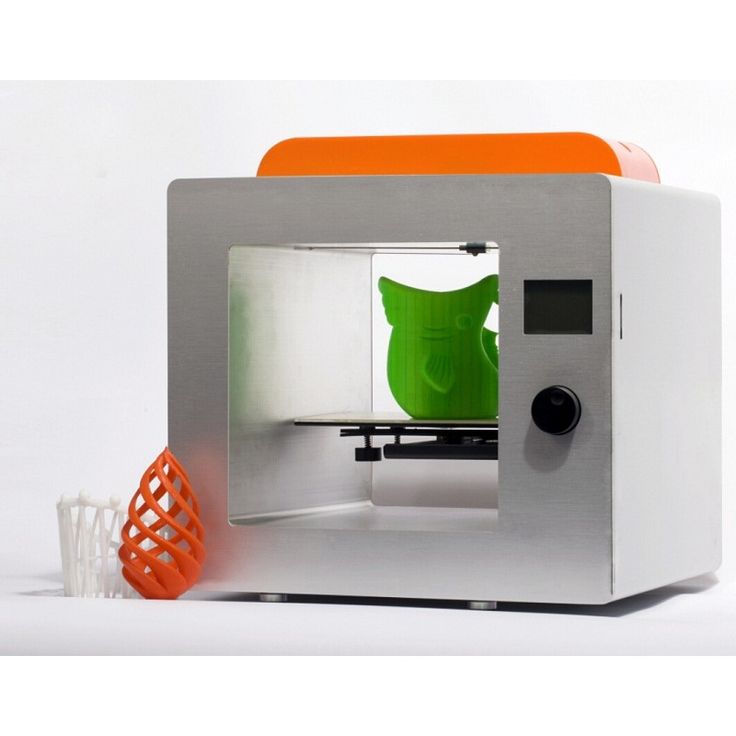
While you will not be moving into a 3D printed house on the near horizon, you can experience 3D printed construction projects today. The MX3D Bridge in Amsterdam is currently open to foot traffic. According to dezzen.com, the “structure used 4,500 kilograms of stainless steel, which was 3D-printed by robots in a factory over a period of six months before being craned into position over the canal this year.”
Source: www.dezeen.com
Read More About the 3D Printed Bridge
With one of the highest barriers-to-entry of any industry in the world, space travel is ripe for 3D printing innovation. Lowering prototyping costs for expensive, space-specific tools and machines will lower costs and allow smaller companies to help innovate in space.
Aerospace startup Relativity has tested the creation of aluminum rocket engines using additive manufacturing. If successful, this application would sharply reduce the costs and practical difficulties of space travel, opening up the field to new business and to a vast potential for growth.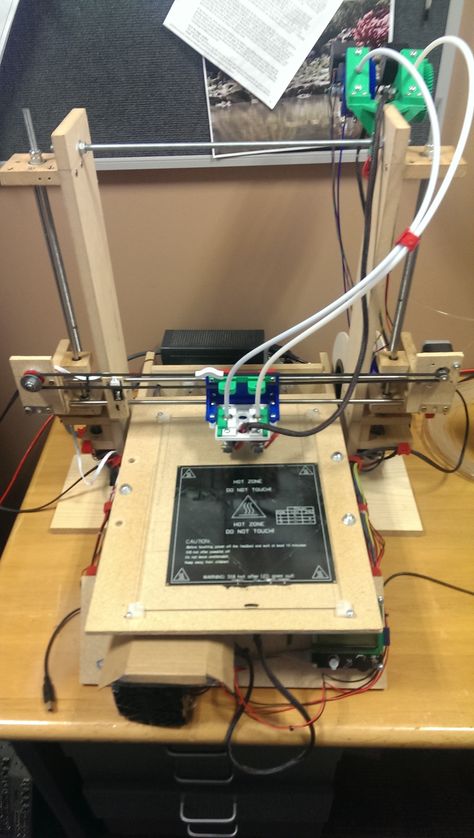
Masten Space Systems is another changemaker for 3D printing in the aerospace industry: founded in 2004, the company specializes in vertical takeoff and vertical landing rocketry. The company is launching a mission to the moon in 2022 as part of the NASA Commercial Lunar Payload Services (CLPS) Project. Using Formlabs 3D printers, Masten produced plastic rocket engines for R&D testing.
The company has experience in 3D printing in both plastics and metals--they’ve even helped develop new custom metals for their NASA Tipping Point project. “We really like 3D printed rocket engines because they enable you to do a lot of things that you can't do in a traditional manufacturing process. In our goal to drive down costs and increase our effectiveness, we started looking at how we could use the Stereolithography printers, particularly once Ceramic Resin and High Temp Resin were released. Those have some rather attractive engineering properties for seeing if we could actually use them in a rocket,” Matthew Kuhns, chief engineer at Masten, said.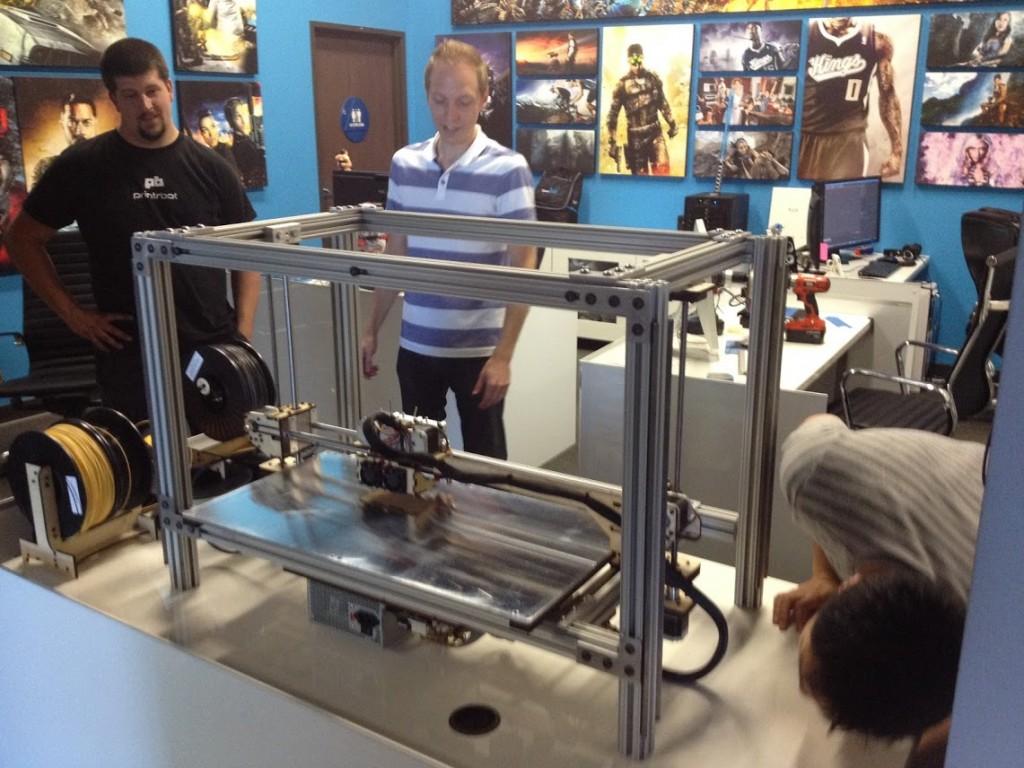
Formlabs’ High Temp Resin and Rigid 10K Resin are examples of materials with optimal engineering properties for aerospace applications. High Temp Resin is designed for functional prototyping in high heat applications while Rigid 10K Resin is the stiffest material in our engineering portfolio, making it suitable for industrial-grade prototypes.
Read More About Masten Space Systems
Origin Labs, within the Innovation Hub, will have a space dedicated to 3D printing for students and the broader community.
Most institutions of higher education are focused on preparing their students for the workforce of the future. The Pennsylvania State University is focused on the current workforce as well and has recently invested millions of dollars into building the Eric J. Barron Innovation Hub, which serves the public as well as the University community.
The Appalachian mountain range in western and central Pennsylvania has historically been the center of the nation’s coal mining industry, and enjoyed a solid and prosperous economy in the first half of the twentieth century because of it.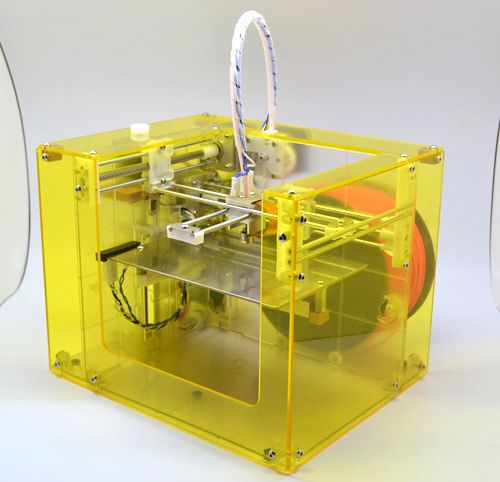 As global and domestic economies shifted away from coal, the Appalachian region suffered, with a higher rate of joblessness and one of the lowest household income rates in the country, as reported by the Appalachian Regional Commission.
As global and domestic economies shifted away from coal, the Appalachian region suffered, with a higher rate of joblessness and one of the lowest household income rates in the country, as reported by the Appalachian Regional Commission.
Over the last two decades, leadership at the local and state levels have sought to change that through investments in manufacturing, education, and technology. The Appalachian Regional Commission offers $1 million grants to “support educational opportunities and institutions, especially by connecting skill development and workforce training with local and regional business interests and opportunities.”
As additive manufacturing rapidly expands in a wide range of businesses (as seen in this blog post!), hiring managers are looking for employees trained in working in digital spaces and fluent in CAD. Universities are looking to address this market lead by creating large and well funded innovation hubs.
See the Investment the Pennsylvania State University is Making
Besides training tomorrow’s workforce in CAD and 3D printing, universities are starting to see the benefits of deploying 3D printers across a wide range of educational disciplines.
At UMass Lowell, that meant modernizing its sculpting and 3D design courses for the 21st century. Enter Yuko Oda, who joined the university in 2017 and got started by ordering a multitude of 3D printers, including a Formlabs SLA machine.
Yuko is able to take her passion for art and technology into the classroom, currently teaching sculpture, 3D modeling and animation, and interactive media. Most students know that they’re required to understand 3D animation and 3D modeling for future careers in various fields, including sculpture design for cinema. For studio artists, 3D modeling has become an essential skill.
“Students sculpt a 3D model, import it into Zbrush, then print in various resins, including Clear Resin. The ability for Formlabs machines to show intricacies that were modified in Zbrush is unparalleled when compared to other printers in the lab.”
Yuko Oda
One of the most promising new developments in sculpture is the integration of 3D printing and Virtual Reality (VR). This is especially salient for students intimidated by 3D design. VR is rapidly reducing barriers for 3D design, allowing artists and students to create with their hands in programs such as Oculus Medium. Yuko has taught 8th graders how to create a 3D object in 30 minutes in VR, and then print the artwork on a 3D printer. Even for seasoned sculptors, VR reduces the time it takes to go from an idea to a physical object, potentially opening up new areas of experimental art.
This is especially salient for students intimidated by 3D design. VR is rapidly reducing barriers for 3D design, allowing artists and students to create with their hands in programs such as Oculus Medium. Yuko has taught 8th graders how to create a 3D object in 30 minutes in VR, and then print the artwork on a 3D printer. Even for seasoned sculptors, VR reduces the time it takes to go from an idea to a physical object, potentially opening up new areas of experimental art.
Learn How How UMass Lowell Integrates Art and Technology
While caretakers at ZooTampa were performing a routine check-up on a 25-year-old great hornbill, they found a lesion at the base of the bird’s casque, the yellow helmet-like growth on top of the head. Further examination determined that the bird, named Crescent, was suffering from life-threatening cancer.
The cancer, located near the bird's skull, couldn't be removed because it housed part of the bird's sinuses. The team wanted to know if they could remove the casque, and replace it with a 3D printed replica designed specifically for this bird. Patient-specific prosthetics and devices have been used before in human procedures, but never for a great hornbill. Would it be possible, and if so, which materials would be safe for the bird?
Patient-specific prosthetics and devices have been used before in human procedures, but never for a great hornbill. Would it be possible, and if so, which materials would be safe for the bird?
ZooTampa says the successful 3D-printed “replacement beak,” was created using BioMed White Resin. This material is an opaque white material for biocompatible applications requiring long-term skin contact or short-term mucosal contact. Special among Formlabs SLA 3D printing materials, this medical-grade material is validated for short-term tissue, bone, and dentin contact.
3D Printing and Veterinary Medicine
During the COVID-19 pandemic and following supply chain crises of 2021/22, many firms turned to 3D printing to help keep machines online and products rolling off the factory floor. The expanded use of in-house 3D printing to create end-use parts, such as replacement parts for machines, has made additive manufacturing a key tool to address supply chain problems.
Formlabs commissioned the 2022 3D Printing Applications Report to better understand what, if anything, has changed recently among 3D printing users.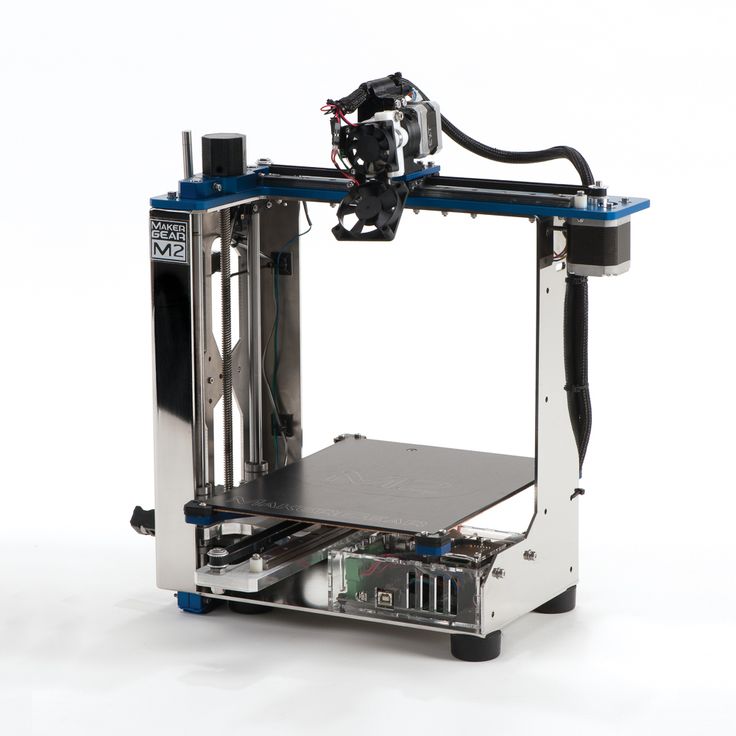 The report demonstrates the shift in attitudes around 3D printing from an R&D and prototyping tool to an invaluable manufacturing technology needed to meet evolving consumer preferences and overcome supply chain challenges. Whether working to ease supply chain constraints, creating limited run products, or personalizing devices, businesses have been forced to rethink how they produce goods to meet customer demand.
The report demonstrates the shift in attitudes around 3D printing from an R&D and prototyping tool to an invaluable manufacturing technology needed to meet evolving consumer preferences and overcome supply chain challenges. Whether working to ease supply chain constraints, creating limited run products, or personalizing devices, businesses have been forced to rethink how they produce goods to meet customer demand.
End-use parts printed on the Fuse 1.
An IR sensor purge printed on the Fuse 1 in Nylon 12 Powder.
Building 3D printers is always an engineering challenge. Packing industrial-grade performance into an affordable, sleek desktop machine requires years of engineering and design work. This was especially true of Formlabs’ much anticipated selective laser sintering (SLS) 3D printer, the Fuse 1.
One of the tools Formlabs engineers used to prototype parts was the Fuse 1 itself. But the use of 3D printing didn’t stop at prototyping. Today, every single Fuse 1 unit shipped to customers contains multiple production parts printed directly on a Fuse 1 using Nylon 12 Powder.
Using the Fuse 1 SLS printer to prototype and create end-use parts offered three main advantages, according to Seth Berg, the engineer program manager overseeing the Fuse 1:
- The design freedom to create complex parts without internal support structures.
- Reducing supply chains by prototyping and creating end-use parts in-house.
- Eliminating outsourcing to achieve an affordable solution for small-batch production with a proven, versatile Nylon 12 material.
To see how the team did this, and which end-use parts on the 3D printer and 3D printers, watch the video below.
In May of 2020, Forbes ran an article titled: How 3D Printing Test Swabs Will Help Fulfill America's Shortage. They noted that the 3D printing industry has come together to tackle the COVID-19 swab shortage head on, with Formlabs, HP, Origin, Carbon, Desktop Metal and more working to ramp up swab production.
The impact of the COVID-19 pandemic required a global, concerted response.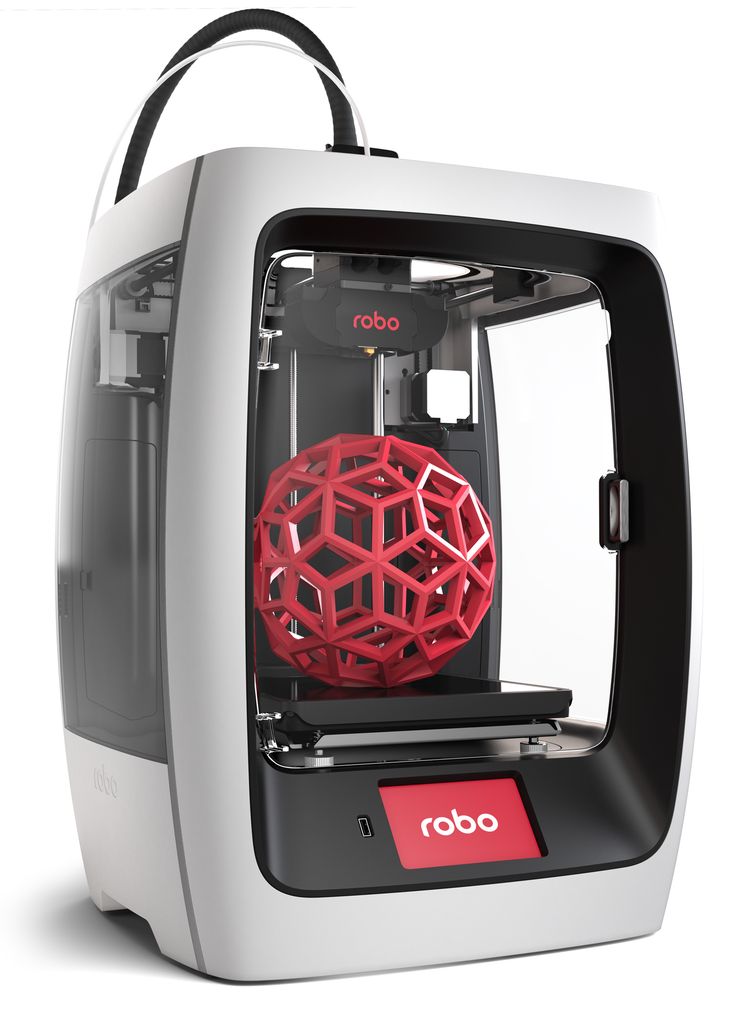 Through collaborating with USF and Northwell, Formlabs enabled a solution that has been deployed worldwide. With the accessible design, affordable equipment, and validated processes, the swab design enabled over forty million COVID tests in twenty five countries. Over the last year, Formlabs 3D printers have continued being used by governments and healthcare providers to improve patient testing and care. This global solution is just one example of how the agility of 3D printing can benefit the public good.
Through collaborating with USF and Northwell, Formlabs enabled a solution that has been deployed worldwide. With the accessible design, affordable equipment, and validated processes, the swab design enabled over forty million COVID tests in twenty five countries. Over the last year, Formlabs 3D printers have continued being used by governments and healthcare providers to improve patient testing and care. This global solution is just one example of how the agility of 3D printing can benefit the public good.
We saw this happen dramatically in Singapore, where Eye-2-Eye Communications ramped swab production to over 30,000 swabs per day to help keep the city safe.
“It has not only been an excellent opportunity to showcase the advantages of 3D printing for rapid design and development but it has also shown Formlabs effectiveness in being able to mass produce products in very short timeframes. Also, as we see spikes in cases across the globe it is reassuring to know we can scale our production relatively easily to meet demand if required,”said Chief Executive Officer of Eye-2-Eye Communications, Miles Podmore.
One controller with buttons printed on the Fuse 1 (left), and another with buttons injected molded (right).
One problem with creating custom aftermarket parts is these orders are typically low volume, and need to evolve in response to product updates by the original manufacturers. But with the rise of in-house 3D printing, custom manufacturing has sprouted in multiple industries.
Battle Beaver Customs is focused on delivering a premier gaming experience through custom gaming controllers. Their modifications make the controllers more responsive and more competitive, allowing players to increase their gaming potential and reach peak performance across a range of games. Rapid prototyping with the Fuse 1 SLS 3D printer allows Battle Beaver Customs to quickly change their mount and button designs. When building custom consumer products, quick turnaround times can pay dividends for businesses looking to stay ahead of their competitors. According to Head of Research and Design at Battle Beaver Customs, Michael Crunelle, the “Fuse 1 has been great for being able to make changes quickly, from concept to end-use part. Our competitors can’t keep up with us."
Our competitors can’t keep up with us."
JetBoatPilot, a marine parts and accessories manufacturer, has built a reputation as an authority in the industry by creating aftermarket products that improve the performance and low speed handling of jet powered boats.
JetBoatPilot utilizes the Form 3 SLA and Fuse 1 selective laser sintering (SLS) 3D printers to prototype and manufacture aftermarket parts. A newly designed and now top performing product, the Lateral Thruster 2.0, was designed and manufactured on the Fuse 1. Equipped with the Fuse 1 and Nylon 12 Powder, JetBoatPilot was able to cut costs by 6x compared to their previous manufacturing methods.“I probably would have made that (aluminum version) retail price somewhere in the $400 dollar range, maybe even $600 dollar range, if I really had pushed it. I wouldn't have sold nearly as many at $600. But now I'm selling it for $199 and the customer is happy as they can be. And I'm twenty times the cost of goods,” says JetBoatPilot founder Will Owens.
With 928 stores spanning across 48 countries, Lush Cosmetics is a retailer known globally for making creative and crowd pleasing products such as Massage Bars, Body Butters, Bath Bombs and more, attributes its success to being able to respond quickly to trends and customer demand.
To bring new, industry defining, highly-detailed cosmetics to life, Lush needed to turn to 3D printing for much more than prototyping new shapes. They’ve invested in a next-generation additive manufacturing center for mold creation, tooling, and end-use parts.
The Lush Cosmetics team vacuum forms using 3D printed molds in-house.
“We use our Formlabs 3D printers for a mix of mold creation, custom tooling, and end-use parts. We’re a reactive business and having this capability in-house means we don’t need to share designs externally as we own everything in the product development process,” said Damien Carter, Innovation Lab Manager at Lush Cosmetics.
See How Lush Cosmetics Operates
3D printing is unleashing new possibilities and business opportunities, such as mass customization.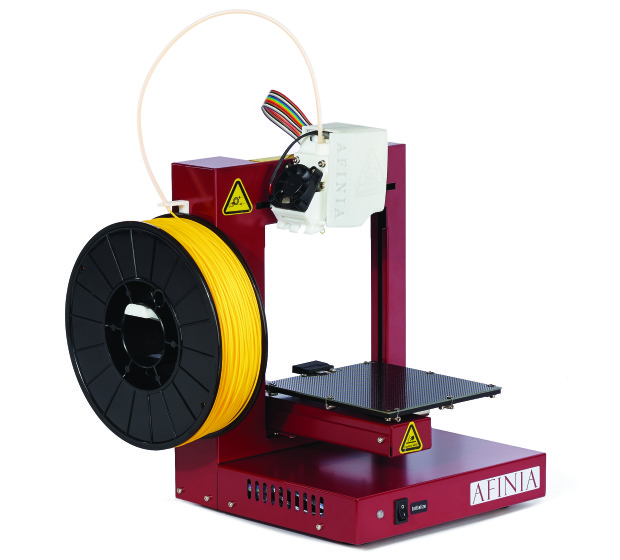 What used to be too complex, prohibitively expensive, or impractical to produce with traditional methods is available at no extra cost with digital technologies, giving full control to designers and opening the door for fully customizable consumer products to become a reality.
What used to be too complex, prohibitively expensive, or impractical to produce with traditional methods is available at no extra cost with digital technologies, giving full control to designers and opening the door for fully customizable consumer products to become a reality.
A good example of this is Gillette’s Razor Maker™, which gives customers the opportunity to customize the handle of their razor by picking various designs, colors, or adding custom text.
“For Gillette, piloting Razor Maker™ represents a crucial step in our customization journey where new technology and new business models must come together in order to deliver products that are as unique as our consumers,” said Donato Diez, global brand manager for Gillette and Razor Maker™
Learn How Gillette Uses 3D Printing to Unlock Consumer Personalization
White Paper
This guide will provide manufacturers with insights into the different approaches to customization, how to choose the most applicable approach, and more.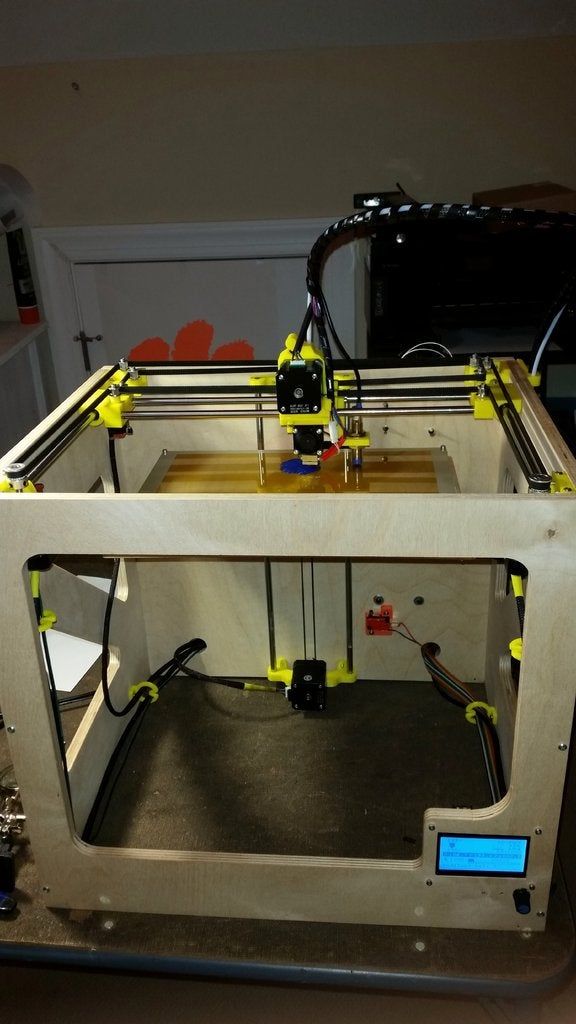
Download the White Paper
Dentistry has also been one of the most prominent drivers of 3D printing investment, desktop 3D printers are an increasingly common sight in dental labs and practices. As a matter of fact, the popular clear aligners, thermoformed on 3D printed molds, are possibly the single most successful use of 3D printing we've seen to date.
Over the past ten years, 3D printing has so advanced in dental that now no new dental labs are opening without using some form of digital dentistry. With materials so good they can 3D print permanent crowns, full dentures, and more.
3D printing technologies thrive in an environment where our unique bodies require custom solutions. As a result, the dental industry is going through a rapid digital transformation with digital workflows bringing increased efficiency, consistently high quality, and lower costs to dental labs and practices.
Five Ways 3D Printing Has Redefined the Dental Industry
Next time you’re out for a night on the town, keep your eyes peeled for our next unexpected 3D printing use-case: 3D printing is coming to custom glasses frames.
Marcus Marienfeld AG set themselves apart from conventional glass frames, using different and unique production techniques to create their frames. Recently they started integrating selective laser sintering (SLS) 3D printing into the production line for frames in their Swiss workshop for printing end-use parts and rapid tooling for forming titanium.
“You get very inventive and imaginative when you have a 3D printer in-house. I can do things with little effort that I wouldn't otherwise try," said Marcus Marienfeld.
See the 3D Printed Glasses
Visualizing 3D printing-driven changes in the way things are made does not require the feats of imagination it once did. As workflows have developed over the last several years and gained footholds in various industries, we are beginning to see that revolutionary potential demonstrated.
From dentistry and across healthcare to consumer goods, architecture, and manufacturing, the public is interacting more and more with the end products of 3D printing. Making custom parts cost-efficient, cutting lead times and overheads, and empowering customers by bringing them closer to the products they want—we can only expect the influence of 3D printing to continue expanding.
Making custom parts cost-efficient, cutting lead times and overheads, and empowering customers by bringing them closer to the products they want—we can only expect the influence of 3D printing to continue expanding.
Explore Formlabs 3D Printers
50 Cool Things to 3D Print / Sudo Null IT News
No ideas for 3D printing? Tired of worthless trinkets? Here is a list of 50 cool really useful things for 3D printing.
Like us, you're excited about the possibilities of 3D printing. But, unfortunately, the horizon is littered with trinkets, trinkets and other unnecessary things. We are in danger of being buried under a heap of useless rubbish.
Throw off the shackles of mediocrity! Let's create really useful things! Here is a list of cool things that you can make on a 3D printer right now. Prove to your family and loved ones that this wonderful technology can be used daily and in practice.
No access to 3D printer? No problem. Just upload your files to our 3D printing price comparison system and choose the best price, ONLINE!
Download from Myminifactory
Cool thing for 3D printing No. 29: Form for Snegles
Download from ThingiVerse
Cool 3D Printable Item #30: Wine Bottle Protector
Download from MyMiniFactory170004
Cool thing for 3D printing No. 31: Pocket ashtray
download from Myminifactory
Cool Press No. 32: Rodist Rodper 9000 9000 9000 9000 download from MYMINIFACTORY
3D Printable Cool Item #33: Apple Remote Stand
Download from MyMiniFactory
3D Printable Cool Item #34: Key Holder
Download with Myminifactory
Cool thing for 3D printing No. 35: Holder of the cutlery for people with disabilities
Download from Myminifactory
Current Press No. LIVE wine bottle
Download from MyMiniFactory
Cool thing for 3D printing #37: Paper cup holder
download from Myminifactory
Cool thing for 3D printing No. 38: Case for blades
38: Case for blades
download from Myminifactory
Cool thing for 3D printing No. 39: Holder for a children's bottle 9000 from MyMiniFactory
3D Printable Cool Item #40: Towel Rack
Download from MyMiniFactory
3D Printable Cool Item #41: Holder for a glass
Download with Myminifactory
Cool thing for 3D Press No. 42: Holder for a phone in the shower
download from Myminifactory
Twisting thing for 3D printing No. 43: Holder No. 43: Holder No. 43: for beer glasses
Download from MyMiniFactory
Cool thing for 3D printing #44: MacBook Pro stand
download from Myminifactory
Cool thing for 3D printing No. 45: Protection for SD-Cart
download from Myminifactory
Cool thing No. 46: BATERIOUS 9000
Download from MyMiniFactory
3D Printable Cool Item #47: Ice Cream Cone Holder
Download from MyMiniFactory
Printable Cool Item #40016 shower set
Download from Myminifactory
Cool Spring No.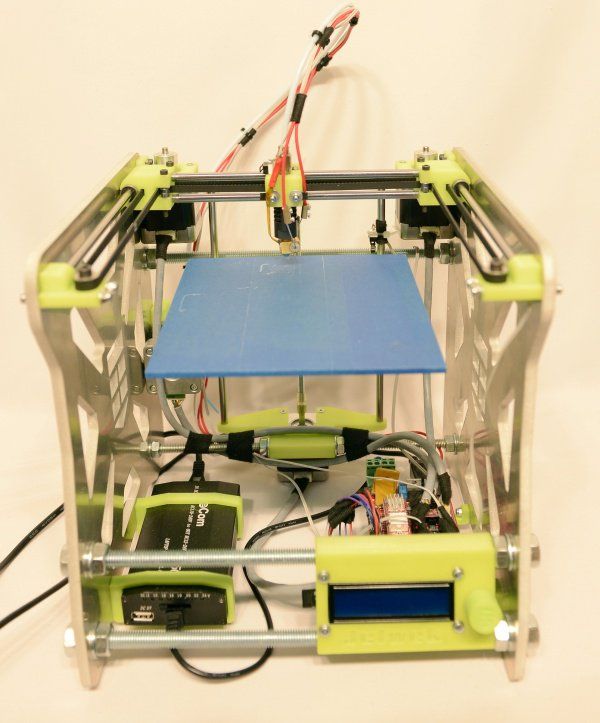 49: Evacal separator
49: Evacal separator
download from Myminifactory
Cool Press No. 50 for 3D:
Download from MyMiniFactory
Want more exciting news from the world of 3D technology?
Follow us on social. facebook networks:
What can be printed and made with a 3d printer? Possibilities of home and commercial use of 3D printer
If you have ever thought about getting a 3D printer, surely you have also wondered what can be done with a 3D printer?
Possibilities of 3D printers
In the past century, 3D models were used only in highly specialized areas: in medicine - for prosthetics, in mechanical engineering - for making molds for casting, in electronics - for building microcircuits, in architecture and design - for obtaining interior layouts and buildings, in research activities - to create an experimental prototype of a future product.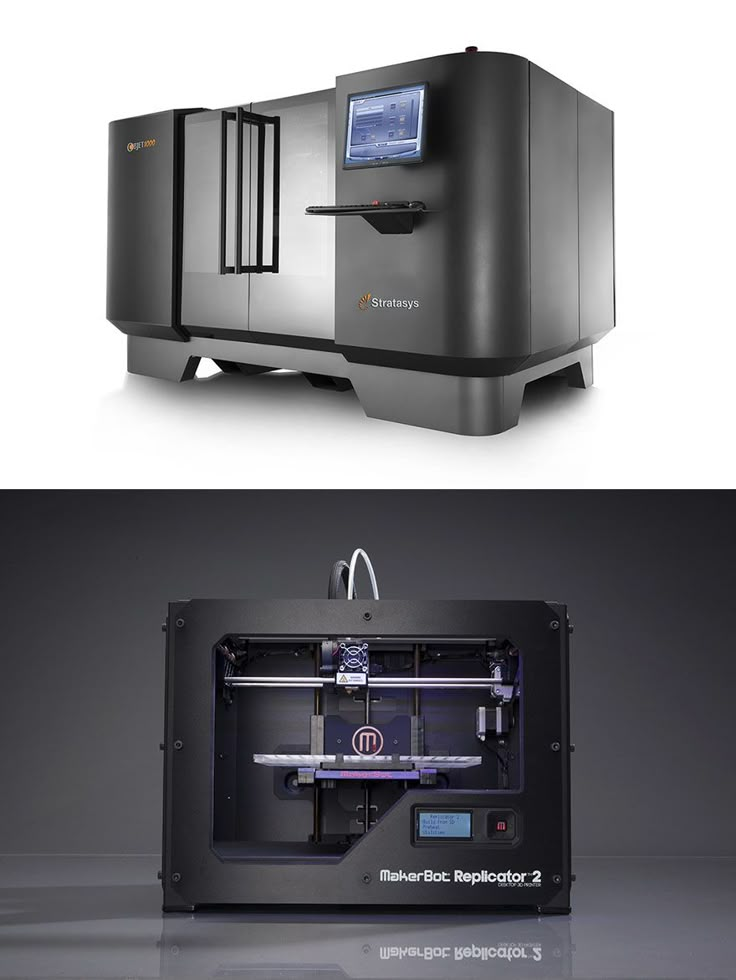
How does a 3d printer print objects?
A 3D printer prints a three-dimensional figure according to a given model using a polymer thread that is applied layer by layer and quickly hardens. Everything that can be printed on a 3D printer, the user either designs on his own in special computer programs, or scans "from nature", or loads ready-made samples from the database. The printer reproduces the object with high precision and at an adjustable speed.
What can be printed on a 3D printer at home?
In the twenty-first century, additive technologies have moved from a purely scientific field into everyday life, actively expanding the circle of their adherents due to a decrease in the market price for peripheral devices, as well as the reality of the idea that absolutely or almost everything can be done on a 3D printer at home. The resulting products are suitable for everyday life and serve as an alternative to purchased factory goods, which contributes to saving the family budget, opens up a new way for the household to develop creative abilities and spend leisure time.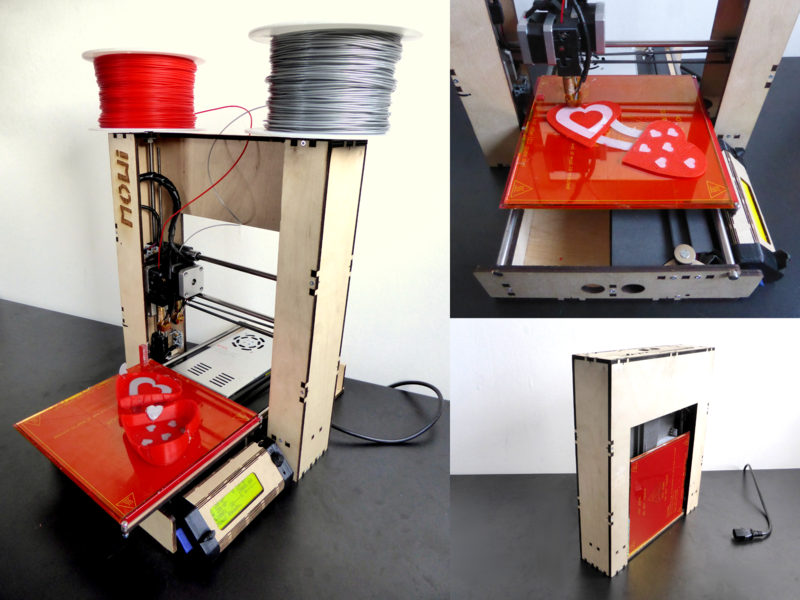
Children's toys and entertainment
Users create online communities where they share 3D models of various children's toys, blocks, construction sets and figurines. In addition, children can print their own fantasies on a home device. Drawn in the program, the drawings "come to life" before their eyes thanks to the layer-by-layer synthesis technology. The 3D printer has gained popularity also because you can take a photo or video of a new invention and put it on the Web - for evaluation by other owners of a three-dimensional device.
To create children's masterpieces, stock up on a wide range of colors of ABS and PLA plastics, as the direction requires the maximum riot of colors. The high-tech Space Monkey Gorilla printer is perfect for these jobs. Wide, it allows you to create monolithic toys of large sizes, and its bright non-standard design will perfectly fit into the interior of a child's room.
Crockery and household utensils
In the field of kitchen utensils, technological innovations are introduced infrequently.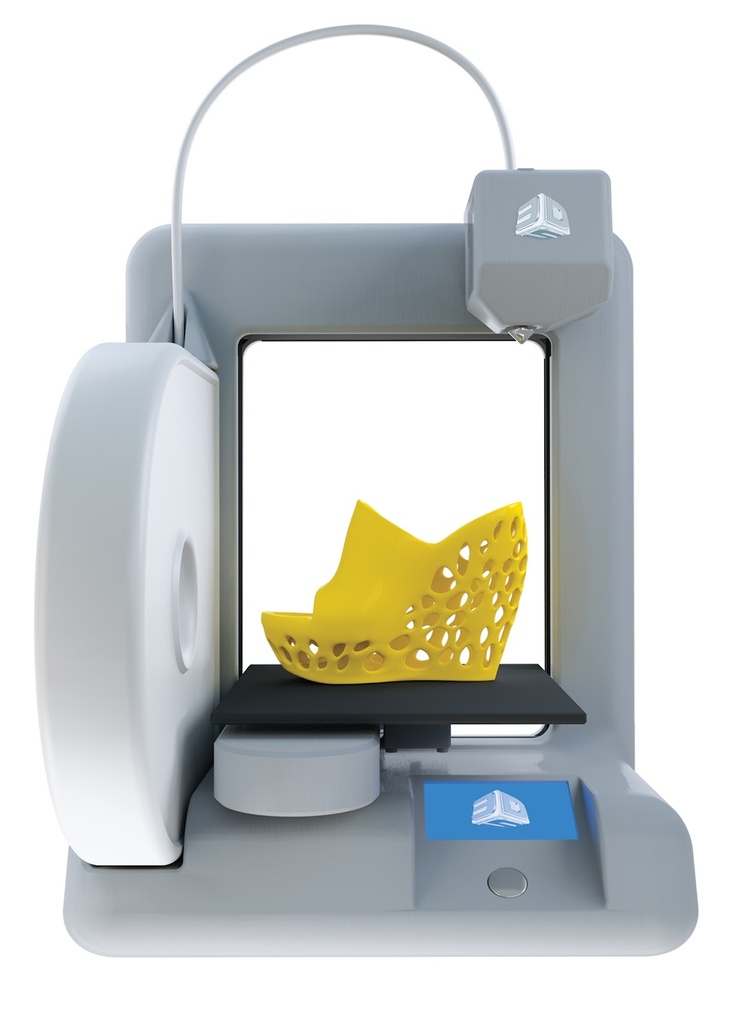 But 3D printing technology has fundamentally changed the structure of tableware production. Ceramics and porcelain have been replaced by much more economical plastics: low-pressure polyethylene, polypropylene, as well as acrylic and ABS plastic.
But 3D printing technology has fundamentally changed the structure of tableware production. Ceramics and porcelain have been replaced by much more economical plastics: low-pressure polyethylene, polypropylene, as well as acrylic and ABS plastic.
At home, you should start with simpler dishes, made from commonly available polymers as a building material: plastic containers, coasters, molds, colanders, plates, cutting boards and lids. To make them, it is enough to have a polymer thread of the same color and a convenient printer, such as the Ultimaker 2 Extended, a high-speed model at an affordable price for its quality.
Furniture and fittings
Furniture is associated with something big and bulky, but three-dimensional innovations have reached this patriarchal realm as well. Dutch developers came up with the idea of assembling furniture from cells of various shapes, which can be printed separately and then glued together.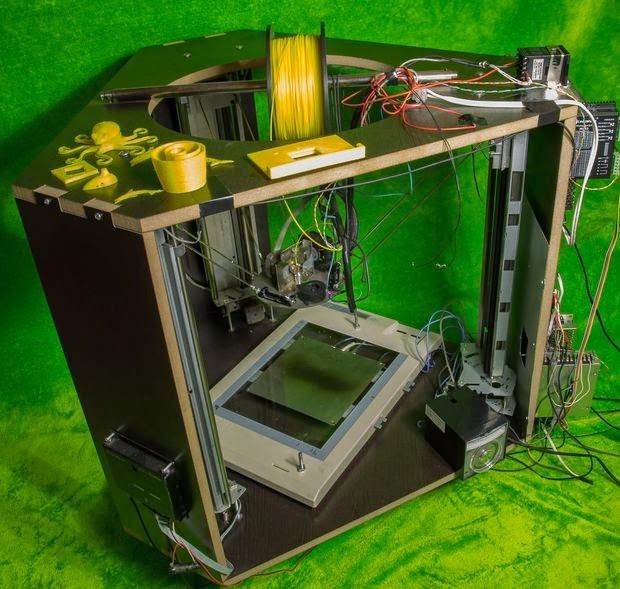 The main advantages of such furniture and interior items are the simplicity of their manufacture. Only one type of plastic is used, environmental friendliness is also at a high level. What can be made on a 3D printer? It can be small chairs, countertops, sofas. Another option is to separately print the original round table leg, lamp stand, handles for drawers, as well as whatnots, hangers, lamp holders and locks.
The main advantages of such furniture and interior items are the simplicity of their manufacture. Only one type of plastic is used, environmental friendliness is also at a high level. What can be made on a 3D printer? It can be small chairs, countertops, sofas. Another option is to separately print the original round table leg, lamp stand, handles for drawers, as well as whatnots, hangers, lamp holders and locks.
For printing at this scale, a high-capacity 3D printer with a wide platform, such as the Leapfrog Creatr XL, is selected. Its dimensions allow you to print objects up to 60 cm in height.
Accessories for mobile devices and computers
Everyday things have long ceased to serve only for their intended purpose. Phone cases, laptop stands, tablet holders over the bed, mounts - all these items are in sight and at hand, they, among other things, express the individuality of the owner.
Phone accessories are made with engraved names, props appear in the form of Atlanteans or octopus tentacles trying to hold the gadget. All of the above items are relatively easy to make at home. To do this, you can purchase the easy-to-use MakerBot Replicator 2X. It particularly clearly fixes the product during the construction process and prevents its deformation, which is important for creating high-quality accessories.
All of the above items are relatively easy to make at home. To do this, you can purchase the easy-to-use MakerBot Replicator 2X. It particularly clearly fixes the product during the construction process and prevents its deformation, which is important for creating high-quality accessories.
Household Tools
The possibilities of what can be done with a 3D printer are shown by the example of complex objects with moving parts. We are talking, for example, about wrenches with adjustable tightening, which do not have to be assembled from two parts - they are printed in a single element. Other examples of printout tools include: a plastic mallet that can withstand nailing; trowels, spatulas for finishing works; rulers, squares and levels for construction work, wrenches and extractors in car dismantling. It is enough to choose the right printer, such as Leapfrog Xeed, which specializes in printing parts of complex geometric shapes.
Stationery
Most of the items in this category have simple 3d modeling programs that are filled with ideas for personal markings and symbols.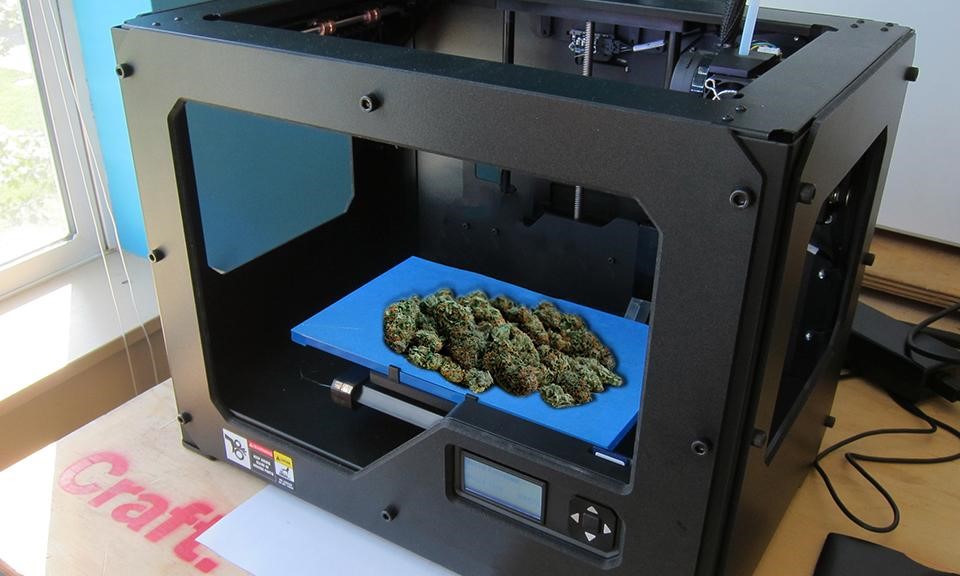 For example, an inscription is made on the body of a pen or business card holder after the completion of the first stage of printing. Other items eligible for 3D printing include rulers, stencils, templates, counting sticks, pencil cases, stationery knife holders, pads for interchangeable writing pads, and organizers. These models are most often monolithic; a reliable desktop 3D printer for simple items Hori Titan is suitable for their manufacture. It is easy to use and of good quality.
For example, an inscription is made on the body of a pen or business card holder after the completion of the first stage of printing. Other items eligible for 3D printing include rulers, stencils, templates, counting sticks, pencil cases, stationery knife holders, pads for interchangeable writing pads, and organizers. These models are most often monolithic; a reliable desktop 3D printer for simple items Hori Titan is suitable for their manufacture. It is easy to use and of good quality.
Jewelery
Nowhere is it more clearly demonstrated that the possibilities of pharmacy precision on a 3D printer are limitless than in the field of jewelry. Expensive installations print photopolymer parts, which are later used as models for making molds. An indispensable device for stereolithography is the high-precision Formlabs Form 2, with which small details of necklaces, rings, necklaces, earrings and pendants are easily printed.
Parts and accessories for cars
3D technology allows additional printing of parts for such large items as cars and motorcycles: pumps, tubes, buttons, pens, canisters, bottles, armrests.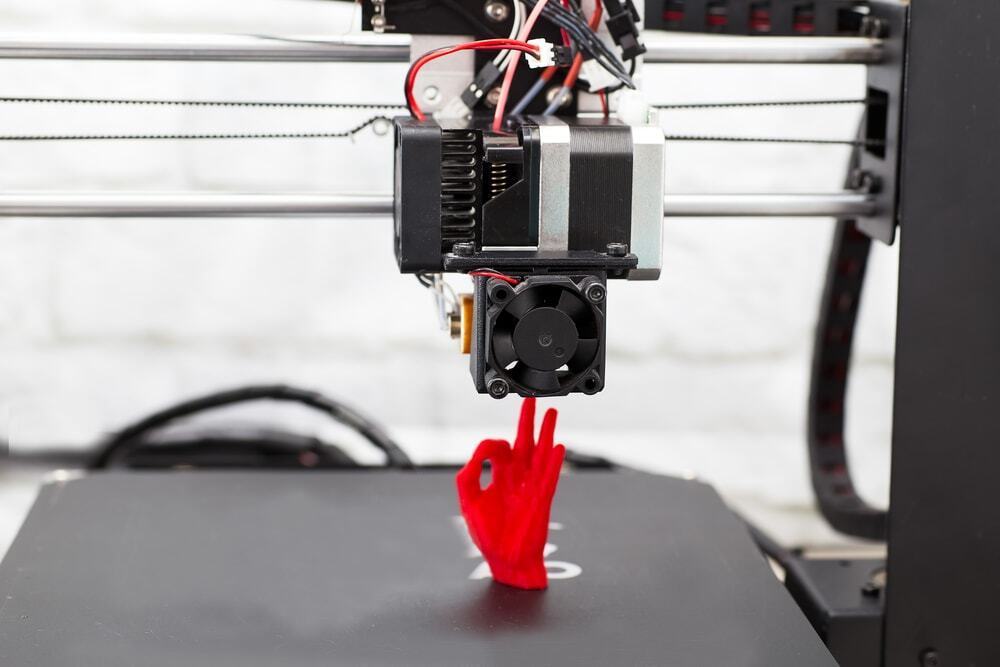 Users have the opportunity to create a unique figurine on the hood or in the salon, make a perfume holder, mirror cases. Numerous dowels, dowels, gaskets, coils are also printed from common ABS and PLA polymer materials.
Users have the opportunity to create a unique figurine on the hood or in the salon, make a perfume holder, mirror cases. Numerous dowels, dowels, gaskets, coils are also printed from common ABS and PLA polymer materials.
3d mini-copies of tuned cars
There is one trendy idea: motorists create an exact reduced copy of their car and try different types of tuning, choosing the right one on a good example. To make accurate measurements from your car, they use scanners that record all the base points-coordinates of a real object (for example, the Gotcha scanner). Car enthusiasts will appreciate the easy-to-use, functional CubePro Trio 3D printer.
Clothing and footwear
Clothing and its usual soft fiber are at first glance incompatible with what can be printed on a 3D printer. However, designers prove otherwise. Among the items of clothing, mesh wraps, T-shirts, dresses and even underwear are created that are anatomically perfect for a person.
The industry has gone one step further by inventing the manufacture of exclusive shoes by laser sintering. The nylon printer is ideal for making clothes and shoes. European quality ensures that you can print on a 3D printer without fear of rapid equipment wear. These devices include the BQ WitBox 3D printer.
3D copy of a person, selfie products
3D printers expand our understanding of what can be made original for an important, close person. The gift industry is steadily moving towards the personalization of gifted items. 3D printing offers such options as a bust or a small figurine that mimics in detail the image of the recipient of the gift. To do this, you need to carefully scan a person using a special scanner and load the data into the program. A high power 3D printer such as Mcor IRIS will reproduce a mini-copy of a person with amazing accuracy. This model uses plain paper, which guarantees a high degree of environmental friendliness of the final product.


 The Hobb Knob is a small pen with a label to describe the items in the drawers. Now you will never lose your socks!
The Hobb Knob is a small pen with a label to describe the items in the drawers. Now you will never lose your socks!  Print it out and give it to your grandmother. She will appreciate this gesture.
Print it out and give it to your grandmother. She will appreciate this gesture. 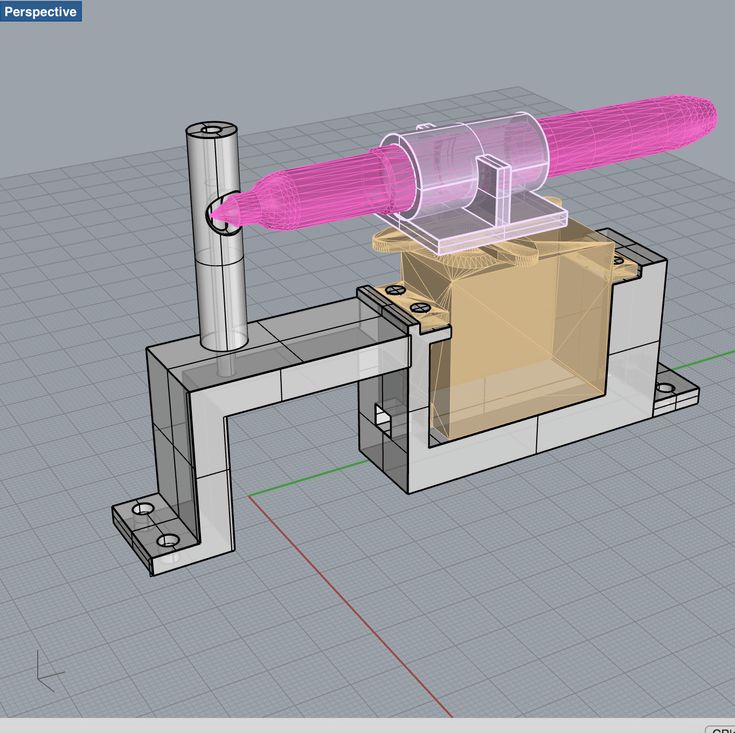 " Do you have such a business card? Find her a pair in the form of this business card holder, printed in its entirety (yes, already with a hinged lid). Instructions for adding a custom logo are included.
" Do you have such a business card? Find her a pair in the form of this business card holder, printed in its entirety (yes, already with a hinged lid). Instructions for adding a custom logo are included. 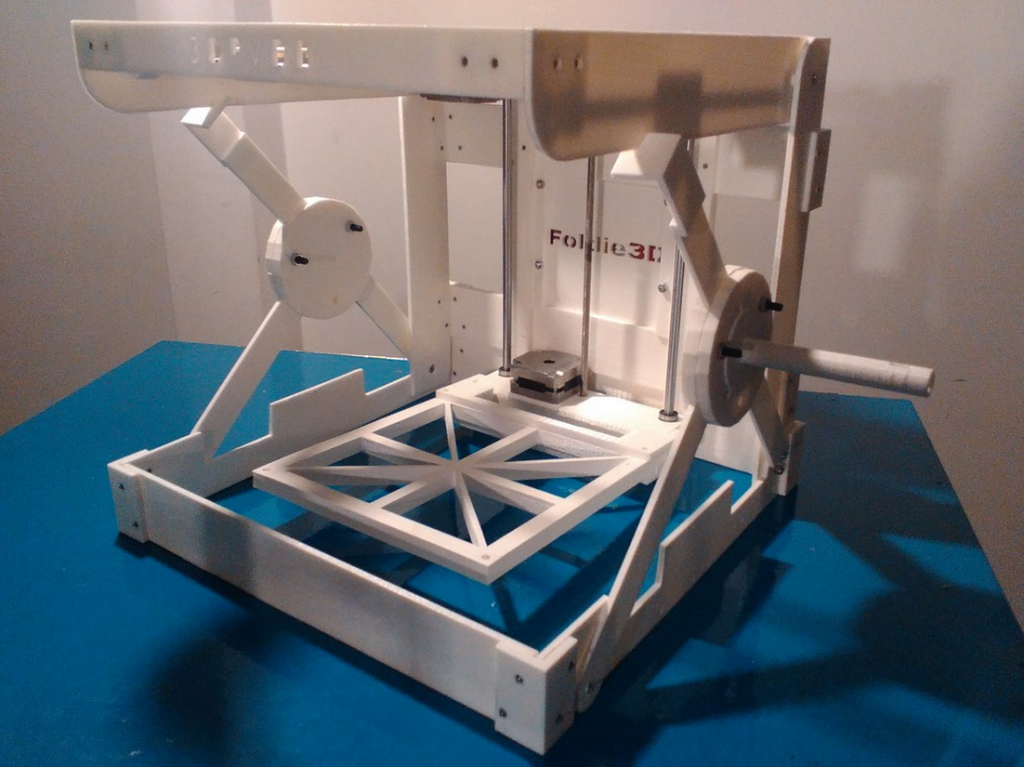
 It is especially suitable for kitchen plants. The next time you buy fresh herbs for cooking, transplant them into this neat device and they'll stay fresh all week long.
It is especially suitable for kitchen plants. The next time you buy fresh herbs for cooking, transplant them into this neat device and they'll stay fresh all week long.  It’s great if you have water limits set in the height of summer.
It’s great if you have water limits set in the height of summer. 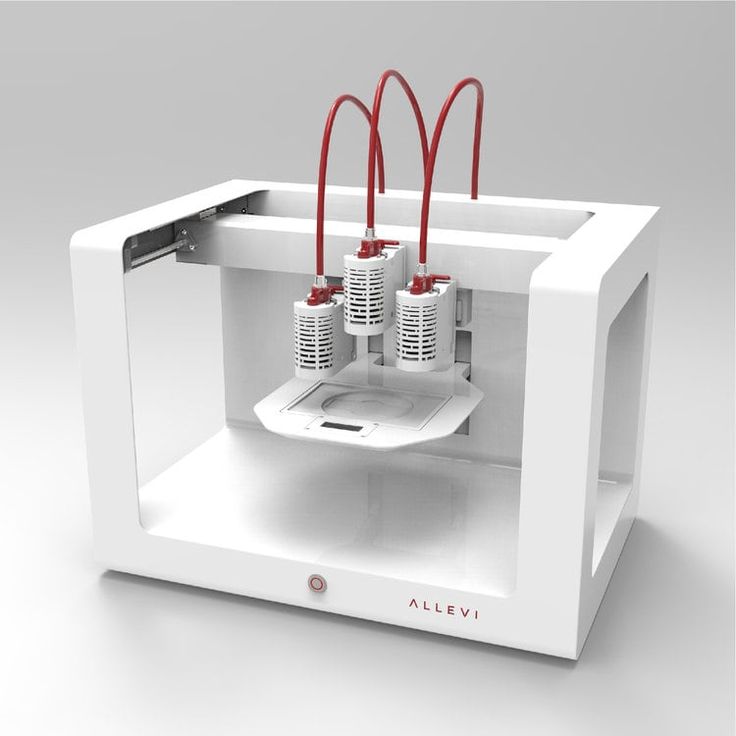 28: Protection for disk
28: Protection for disk 
